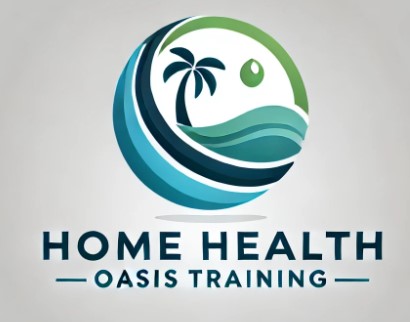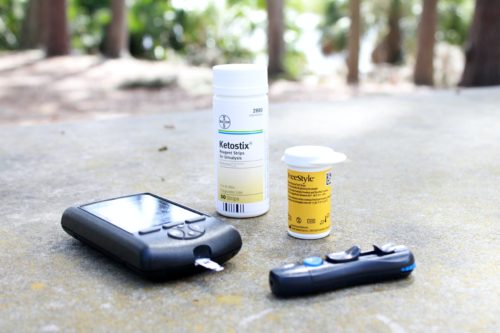How Medicare Certification Impacts Home Health Agencies’ Reimbursement Rates
Introduction
Home health care has become a crucial part of the healthcare system, particularly as the U.S. population ages. With an increasing number of older adults requiring in-home medical services, home health agencies (HHAs) are more vital than ever. One of the most significant factors determining the success and financial health of these agencies is the ability to secure reimbursement for services provided. For most home health agencies, Medicare certification plays a pivotal role in determining reimbursement rates. This certification not only validates the quality of care offered but also directly impacts the agency’s financial stability and ability to serve its patient base.
This blog will explore the relationship between Medicare certification and reimbursement, explaining how agencies can maximize their revenue by being certified. Additionally, we will discuss the steps and strategies that agencies can implement to enhance their chances of obtaining and maintaining certification, ultimately boosting their reimbursement rates.
The Importance of Medicare Certification for Home Health Agencies
Medicare is one of the largest payers for home health services in the United States. In fact, it is estimated that more than half of home health agencies’ revenue comes from Medicare reimbursements. As a result, Medicare certification is not just a regulatory requirement—it’s a financial lifeline for most HHAs.
What is Medicare Certification?
Medicare certification is a process through which a home health agency (HHA) is approved by the Centers for Medicare & Medicaid Services (CMS) to provide services to Medicare beneficiaries. The process involves meeting rigorous quality standards and complying with federal regulations to ensure that the agency provides safe, effective, and high-quality care. Certification allows HHAs to bill Medicare for services provided to eligible beneficiaries, which is crucial to an agency’s bottom line.
The Certification Process
To become Medicare-certified, an HHA must undergo a series of steps, including:
-
Application Submission: Agencies must submit an application to CMS, detailing the services they provide and how they plan to meet the Medicare requirements.
-
Survey and Inspection: CMS conducts a survey or inspection to ensure the agency meets federal standards, including the conditions of participation (CoPs). These standards include requirements related to patient care, administrative practices, staffing, and quality improvement.
-
Approval and Certification: Once the agency has passed the survey and inspection, it receives Medicare certification, which allows it to participate in the Medicare program.
Medicare certification is typically valid for three years, after which the agency must undergo recertification to continue participating in the program. If the agency fails to meet required standards, CMS can revoke or deny certification, which would have significant financial consequences.
The Role of Medicare Certification in Reimbursement Rates
Once certified, an HHA becomes eligible to receive Medicare reimbursement for services provided to Medicare beneficiaries. The certification process is directly tied to the agency’s ability to receive payments, but the specifics of how much they are reimbursed depend on various factors.
-
Medicare Payment Models: The reimbursement process for home health services has undergone significant changes in recent years. Previously, HHAs were reimbursed on a fee-for-service (FFS) basis, meaning they were paid for each service rendered. However, under the Prospective Payment System (PPS), introduced in 2000, home health agencies now receive a fixed amount based on the patient’s needs, which is determined by the Patient-Driven Groupings Model (PDGM).
Under PDGM, reimbursement rates are based on multiple factors, including:
-
Diagnosis Codes: The primary reason for the patient’s visit.
-
Functional Status: The patient’s ability to perform basic activities of daily living (ADLs).
-
Comorbidities: The presence of additional medical conditions that complicate the patient’s care.
-
Timing of the Episode: Whether the care is provided early or late in the calendar year.
This shift toward a fixed payment model incentivizes agencies to focus on high-quality care, efficient service delivery, and thorough documentation of patient needs.
-
-
Quality-Based Reimbursement: Medicare also incentivizes high-quality care through the Home Health Quality Reporting Program (HHQRP). Under this program, HHAs are required to report specific quality measures, such as the improvement in a patient’s functional status and the prevention of hospital readmissions. Agencies that meet quality reporting requirements receive a higher reimbursement rate, while those that fail to meet these standards may face penalties, such as reduced payments.
-
Star Rating System: Medicare also uses a star rating system to evaluate the performance of home health agencies based on patient satisfaction and quality of care. Agencies with higher star ratings are more likely to receive favorable reimbursement rates, as Medicare is placing increasing emphasis on patient outcomes and satisfaction. Higher ratings can also make an agency more competitive in attracting new patients, leading to increased volume and ultimately more revenue.
How Agencies Can Maximize Revenue by Being Medicare Certified
Achieving and maintaining Medicare certification is only the first step in securing consistent and adequate reimbursement for services rendered. Home health agencies must also adopt specific strategies to optimize their revenue by effectively managing their operations, meeting regulatory requirements, and improving patient care. Below are key strategies that HHAs can employ to maximize their reimbursement rates:
1. Focus on Accurate Documentation
Medicare’s reimbursement system is highly dependent on proper documentation. To ensure that the reimbursement rates reflect the true needs of the patient, home health agencies must maintain detailed and accurate patient records. This includes documenting the patient’s medical history, functional status, diagnosis, treatment plan, and progress throughout the care episode.
Inaccurate or incomplete documentation can result in reduced payments or denials of reimbursement. Additionally, incorrect coding can impact the agency’s reimbursement rate under the PDGM model, as Medicare payments are influenced by the diagnosis codes submitted for each patient. Therefore, it’s crucial for agencies to train their staff on proper documentation and coding practices.
2. Emphasize Quality of Care
Medicare increasingly ties reimbursement to the quality of care provided. Agencies that demonstrate a commitment to high-quality care are rewarded with better reimbursement rates through the HHQRP. To improve the quality of care, home health agencies should:
-
Regularly evaluate patient outcomes, such as improvements in functional status, pain management, and patient satisfaction.
-
Use evidence-based best practices to ensure optimal care.
-
Offer continuing education to staff to ensure they are up to date on the latest care standards and practices.
-
Focus on patient engagement and satisfaction to increase the likelihood of achieving positive outcomes and high star ratings.
3. Leverage Technology to Enhance Efficiency
Home health agencies that incorporate technology into their operations can streamline care delivery, improve accuracy, and reduce administrative costs. Tools such as electronic health records (EHRs) and point-of-care mobile applications can help providers better document patient data, manage care plans, and communicate with other healthcare providers.
Moreover, advanced analytics can help agencies identify trends in patient outcomes, monitor service utilization, and predict areas where interventions might improve care. This data can inform strategies for increasing efficiency and reducing readmissions, which, in turn, can lead to higher reimbursement rates under the Medicare reimbursement structure.
4. Develop a Strong Quality Improvement Program
To maintain or improve reimbursement rates, home health agencies must have a robust quality improvement (QI) program. This program should focus on continuously identifying opportunities to improve care and reduce inefficiencies. Successful QI initiatives can lead to better patient outcomes, fewer adverse events, and higher patient satisfaction—factors that directly affect reimbursement rates.
Agencies should regularly conduct internal audits to assess compliance with Medicare regulations, review patient outcomes, and address any areas where performance can be improved. The QI program should also include employee training on regulatory compliance, as maintaining certification requires ongoing adherence to Medicare’s standards.
5. Maintain a Competitive Advantage with Star Ratings
As previously mentioned, Medicare uses a star rating system to assess home health agencies’ performance based on patient satisfaction and quality of care. Agencies that achieve higher star ratings not only benefit from higher reimbursement rates but also attract more patients.
To enhance their star ratings, agencies should:
-
Actively engage with patients to ensure they are satisfied with their care.
-
Address patient concerns and complaints in a timely and effective manner.
-
Use patient feedback to identify areas for improvement.
A strong reputation, backed by high star ratings, can be a powerful marketing tool for attracting new Medicare beneficiaries, which can increase the agency’s patient volume and overall revenue.
6. Stay Informed on Regulatory Changes
The healthcare industry, including Medicare policies and regulations, is constantly evolving. Changes in reimbursement rates, quality reporting requirements, and certification standards can have a significant impact on home health agencies’ bottom lines.
To stay competitive, home health agencies must actively monitor regulatory changes and adapt their practices accordingly. Agencies should participate in industry associations, attend training seminars, and work closely with their compliance teams to ensure they remain in compliance with all Medicare guidelines.
Conclusion
Medicare certification is a critical component of home health agencies’ ability to secure reimbursement for services rendered. By obtaining and maintaining certification, agencies can access funding from one of the largest healthcare payers in the country, allowing them to continue providing essential services to Medicare beneficiaries. However, to maximize reimbursement rates, agencies must adopt effective strategies such as accurate documentation, focusing on quality care, leveraging technology, and continuously improving their quality improvement programs.
As the healthcare landscape continues to evolve, home health agencies must stay vigilant, adaptable, and committed to providing high-quality care to ensure their financial stability and continued success under the Medicare reimbursement system. By doing so, agencies can not only thrive financially but also improve patient outcomes and satisfaction, contributing to the overall success of the home health care industry.
Editor's Pick
Leave A Comment
Related Posts
Transition from OASIS-E to OASIS-E1: Key Changes and Implications for […]
Importance of Clinical Narrative and Nurse Teachings while Documenting Home Health OASIS Assessments
Importance of Clinical Narrative and Nurse Teachings while Documenting Home […]
Navigating the Complexities of Medicare and Medicaid Reimbursement for Home […]
Engaging Your Team Around the IPR: Turning Data into Motivation […]
Engaging Your Team Around the IPR: Turning Data into Motivation […]

